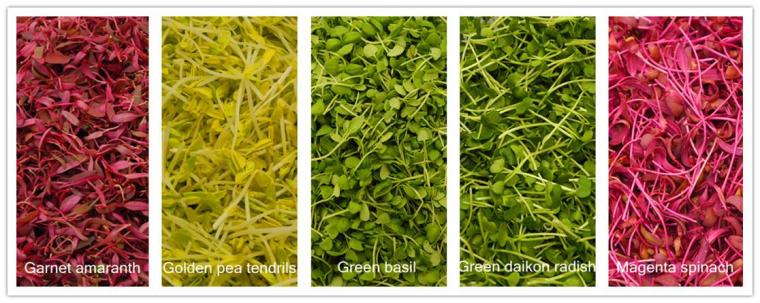KIRKSVILLE, Mo. –Tiny versions of edible greens are four to six times higher in nutrient value than their mature counterparts, according to new research presented at the recent Missouri Livestock Symposium in Kirksville.
Microgreens are becoming popular at upscale restaurants because of their texture, colors and intense flavors, but it turns out they add more to meals than just visual appeal and palate-pleasing taste.
“Microgreens are super-nutritious,” said Zhenlei Xiao, a Ph.D. student at the University of Maryland.
Xiao is part of a team of University of Maryland and USDA researchers who looked at levels of vitamins and carotenoid phytochemicals such as beta-carotene and lutein in 25 varieties of microgreens. They found that leaves from almost all of the microgreens had more nutrients than the mature leaves of the same plant.
There was variation among them – red cabbage was highest in vitamin C, for instance, while the green daikon radish microgreens had the most vitamin E.
The findings were published in the Journal of Agricultural and Food Chemistry. “Some of the numbers were really, really high,” said Xiao. “It’s very impressive.”
Microgreens are not the same as sprouts, she noted. Sprouts are germinated seeds and are soaked in water. With microgreens, seeds are planted and grown in soil or a soil substitute and generally are ready to harvest in 7-14 days.
Among the most commonly grown microgreens are arugula, beets, radish, cilantro, golden pea shoots, fennel, parsley, celery, chard, kale, cress, mustard, basil, spinach and broccoli.
While nutritious microgreens may find their way to more American dinner tables, they won’t replace their fibrous mature versions. They have a short shelf life and are better eaten raw.
The Missouri Livestock Symposium is organized by University of Missouri Extension and the Missouri Livestock Symposium Committee. For more information, go to Missouri Livestock Symposium.
